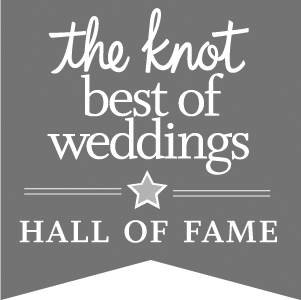Understanding Precious Metals in Fine Jewelry
Throughout history jewelry has been fabricated using various durable materials. The most beloved . . . Precious Metals! Explore their many virtues, see what makes them the perfect choice for your jewelry.
Precious Metal Jewelry
The word gold, used by itself, means all gold or it can refer to “pure” gold, meaning 24 karat (24K) gold. Because 24K gold is soft, it’s usually mixed with other metal jewelry called alloys to increase its hardness and durability. If a piece of jewelry is not 24 karat gold, the karat quality should accompany any claim that the item is gold.
The karat quality marking tells you what proportion of gold is mixed with the other metals. Fourteen-karat (14K) jewelry contains 14 parts of gold, mixed in throughout with 10 parts of an alloy metal. The higher the karat rating, the higher the proportion of gold in the piece of jewelry.
Jewelry should be marked with its karat quality. Near the karat quality mark, you also should see the name or the U.S. registered trademark of the company that will stand behind the mark. The trademark may be in the form of a name, symbol or initials. If you don’t see a trademark accompanying a quality mark on a piece of jewelry, look for another piece.
List of Precious Metals
Platinum is a type of precious metal jewelry that costs more than gold. It usually is mixed with other similar metals, known as the platinum group metals: iridium, palladium, ruthenium, rhodium and osmium.
Different markings are used on platinum jewelry as compared with gold jewelry, based on the amount of pure platinum in the piece. The quality markings for platinum are based on parts per thousand. For example, the marking 900 Platinum means that 900 parts out of 1000 are pure platinum, or in other words, the item is 90% platinum and 10% other metals. The abbreviations for platinum — Plat. or Pt. — also can be used in marking jewelry.
The words silver or sterling silver describe a product that contains 92.5% silver. Silver products sometimes may be marked 925 which means that 925 parts per thousand are pure silver. Some jewelry may be described as silverplate: a layer of silver is bonded to a base metal. The mark coin silver is used for compounds that contain 90% silver. According to the law, qual
Choose a Precious Metal that fits Your Lifestyle
We all know that different people have different interests. But did you know that when choosing jewelry, you can pick a metal that fits your interests? Certain precious metals, platinum for instance, are more durable and fit an active lifestyle. Look at the lifestyles below, and see the metals that fit yours!
True Romantic Tim — Tim leads a moderately active lifestyle. He likes to play sports with his friends, but you won’t catch him on the field every day. When it comes to romance, he’s a traditionalist. What should he do to match his lifestyle? Buy gold. Coveted for its luster and beauty, gold is the traditional metal for wedding rings. However, gold continues to hold its own among a bevy of new metals. The percentage of gold in a ring is measured by karats. Since gold is a relatively soft metal, the higher the percentage of gold (and the higher the Karat), the softer the ring. Men’s rings generally are made in 10, 14 and 18 karat gold, so that the rings will be more durable. Most gold jewelry is either yellow or white. The alloys used will alter the color. Some gold is plated with rhodium to make it appear a brighter white. Since the coating can wear away with time, active individuals may prefer a more durable white metal such as platinum or palladium. Visit your local American Gem Society jeweler for quarterly polishing and cleaning to keep the luster alive.
Everyday Evelyn — Evelyn likes to wear jewelry every day. Earrings, bracelets, rings, necklaces — and she likes to wear different jewelry often. What should she buy? Silver. Silver is the softest — and the least expensive — of the fine metals. Since it scratches easily, it is best used for jewelry that is not worn daily. Since it is inexpensive, silver allows you to have many pieces you can switch out. People who are extremely active or enjoy gardening or working with their hands, may want to consider a harder metal.
Gotta Go Gary — Gary is active. He likes sports, and he often helps his wife in the garden. He’s found he often forgets to remove his gold wedding ring, and it is covered in scratches. What should Gary do? Purchase Titanium. Coming in an array of silvery colors, titanium is a great metal for the most active of people. Titanium is the hardest of the metals, therefore more scratch, dent, and bend resistant. Another benefit is that in its pure form, titanium is 100% hypoallergenic. Titanium does have its drawbacks: since it cannot be soldered, titanium rings cannot be sized and in an emergency, it is much harder to cut off than other metals.
Allergic Anna — Anna is young and active with many interests. But she also has sensitive skin, which white gold tends to irritate. Being young, she is still climbing the career ladder. What should she buy? Palladium. This is a popular choice among the young and active. As a white metal, palladium strikes a harmonic balance between white gold and platinum. Harder than gold, yet softer than platinum, palladium can be used in jewelry in its near pure form, making it hypoallergenic. Also, palladium, unlike white gold, is naturally white. Palladium is also less expensive than platinum and can be sized and polished.
Nancy Nightlife — Nancy keeps her schedule full, day and night. She needs jewelry that can keep up with her and can have the style she needs if a late business dinner leaves her running for the night club. What should Nancy do? Invest in platinum. This prestigious — and expensive — metal is hypoallergenic dense, heavy and scratch resistant. It fits an active style where a sense of class and elegance are desired, even while on the run.
Information on precious metals provided by the American Gem Society.
Shop Precious Metals Today
Explore our gold and sterling silver collections, or search for other precious metal types to discover more.







